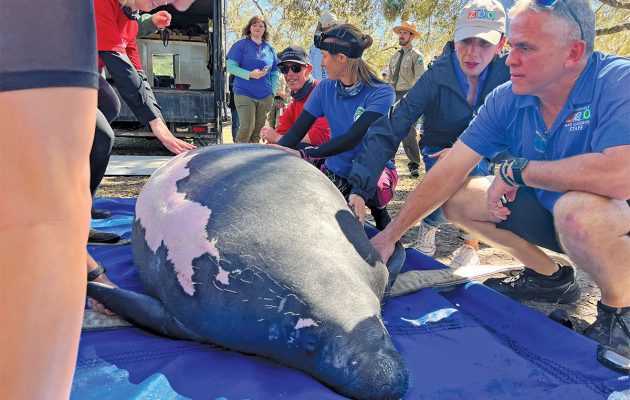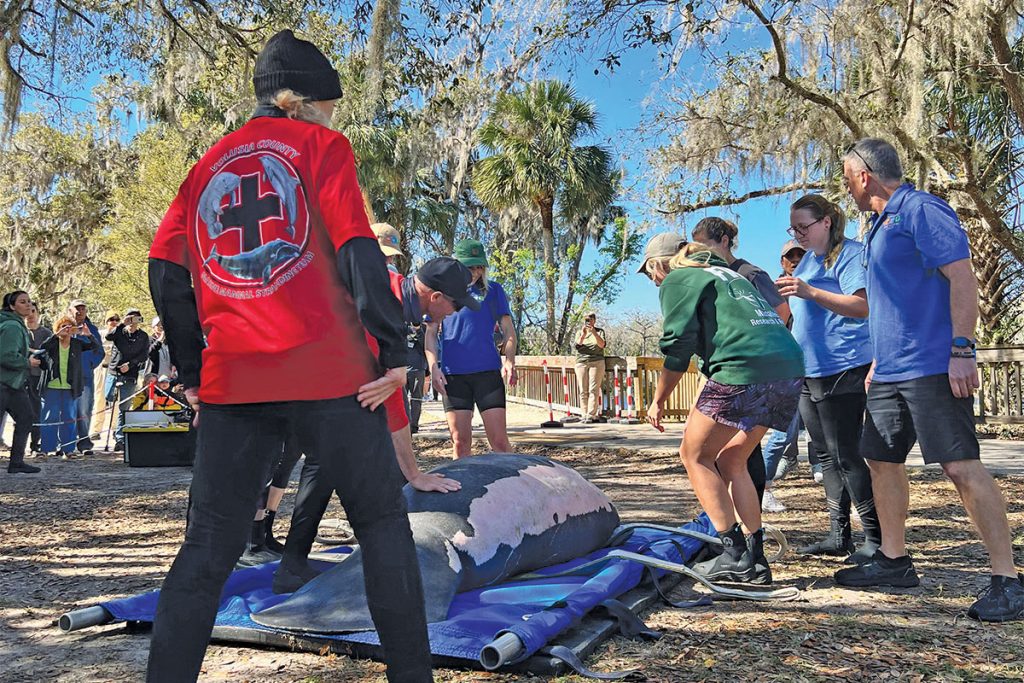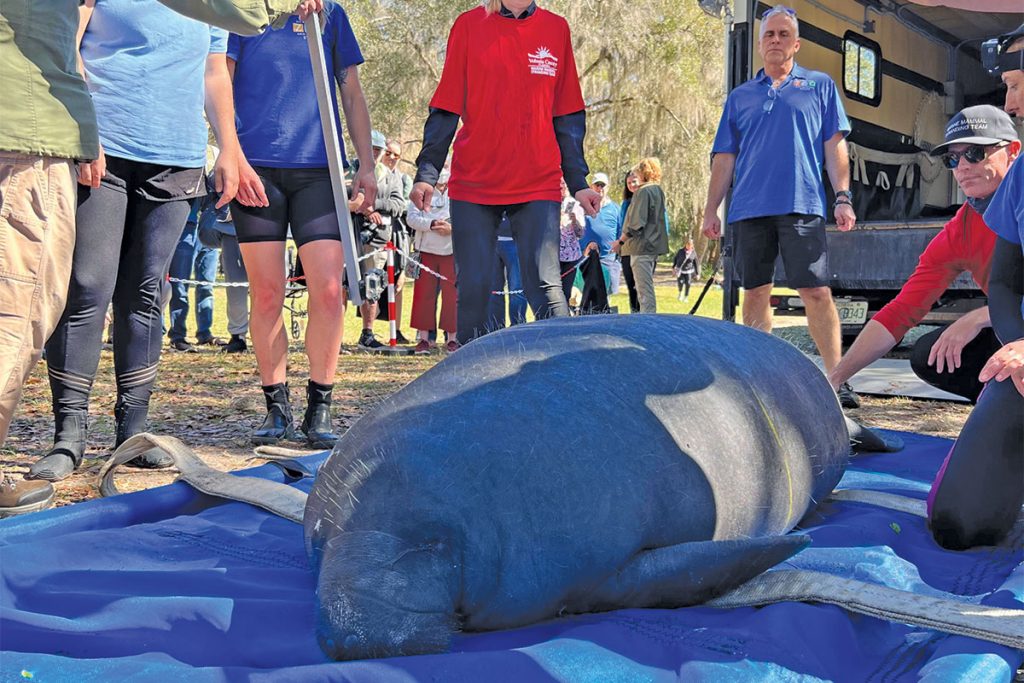Animal House: Asha, a Manatee Against the Odds

In March 2021, a lone West Indian Manatee calf was found swimming along in Volusia County’s Halifax River amid waters far too cold for even healthy, mature manatees. Rescuers dubbed the year-old calf Asha and pulled her from the frigid waters on March 5.
With open wounds, underweight and cold-stressed, Asha was in critical condition. Cold stress is like frostbite for manatees, occurring when water drops below their 68-degree comfort zone, triggering a cascade of physical illness. Rescuers feared she would not survive.
Because manatees cannot adapt to cold water or regulate body temperature, exposure causes their metabolism and appetite to drop. Their digestion slows, causing weight loss and starvation. The manatee’s usually robust immune system is weakened, leaving them vulnerable to toxins, diseases, infections and lesions. Cold-stressed manatees must be rushed into 80-degree water and given food and vitamins.
Unfortunately, something unprecedented occurred during Asha’s rescue. During transport, the skin peeled off the right side of her body. The exact cause of her skin loss was unknown at that time.
Craig Miller, 58, is Jacksonville Zoo & Gardens’ Curator of Manatee Conservation and director of their Manatee Critical Care Center (MCCC). He was part of the team that rescued Asha.
“Asha’s extreme skin condition had never been seen before,” said Miller. “Although manatee conservation experts are studying the condition, the exact cause remains a mystery. One possible theory points to nutritional deficiency.”
Despite ongoing research and similar reported cases, the exact cause has not yet been identified. According to Miller, Jacksonville is the only federally permitted manatee acute care center that has seen and successfully treated such extensive skin loss. After transport to Jacksonville’s MCCC, Asha began six months of around-the-clock care to recover, grow, gain weight, learn to feed and survive on her own.

As a West Indian Manatee, Asha is a native Florida subspecies that grows to ten feet and 1,200 pounds. These slow-moving “sea cows” are herbivores that spend hours grazing on aquatic sea grasses found in shallow, sunlit waters. She traditionally would have remained with her mother for up to two years in the wild.
While warnings of the known perils threatening Florida’s manatees remain, the types and severity of threats have changed. Human-related catastrophic injuries or deaths traditionally cause the greatest numbers of manatee deaths, most from watercraft strikes (73 in the first six months of 2023), fishing net entanglements or being crushed in canal locks or flood gates. Manatees die or are injured by discarded trash, fishing monofilament line, hooks and nets.
Tragically for manatees, the manatee speed zones, warning signs and publicity have little impact on boating habits that maim or kill manatees as they swim or float. Rampant coastal development of natural river shorelines, springs, bays and canals – manatee habitats and travel byways – threaten the already questionable survival of these vulnerable marine mammals.
Then, in 2011, alarms were raised that industrial and municipal sites and farms were allowing toxic runoff or deliberately dumping chemicals, fertilizer, sewage and manure into Florida waterways. Years of worsening water quality caused deadly algal blooms that triggered a catastrophic mass die-off of seagrass in the Indian River Lagoon, where hundreds of manatees winter. The malnutrition, starvation and hundreds of manatee deaths that followed was named an Unusual Mortality Event. From December 2020 to mid-2023, there were an estimated minimum of 1,817 manatee deaths, with 1,052 in 2021 alone.
Since July 2006, the Jacksonville Zoo’s Marine Mammal Response Team has assisted FWC with manatee, dolphins and pygmy sperm whale rescue and recovery. It has saved more than 30 sick or injured manatees. During the 2021 crisis, the zoo treated 13 manatees, the busiest year on record. In 2022, eight manatees were treated. As of October 2023, there have been seven manatees in care.
In October, the zoo broke ground for its Manatee River Habitat, an expansion to four new pools and three habitats, tripling the facility. The new mixed-species environment will feature manatees and Florida’s native fish, reptiles and birds.
Despite her overall critical condition, Asha defied the odds. During her rehabilitation at the zoo, Asha grew from 5’7 to a healthy 8’2 length and gained more than 600 pounds.

On Feb. 13, 2023, Asha was part of a record-breaking release of twelve rehabilitated manatees back into Blue Spring State Park. She lost both parts of her satellite tracking device on Feb. 25, which were recovered from Lake George the following day, just weeks after release. However, there have been reported sightings of her in the St. Johns River.
“Asha has been sighted twice and appears healthy. Because of her distinctive large white side, she is easily identified. A biologist saw her on June 21 at the base of the Dames Point Bridge. On June 28, a citizen spotted her in the Trout River swimming upstream from the zoo. She swam right past us,” Miller said.
Asha’s success encourages manatee rescuers and researchers because, as Miller said, “just knowing she’s out there makes everyone happy.”
By Julie Kerns Garmendia
Resident Community News







